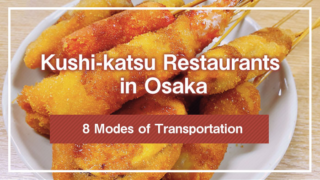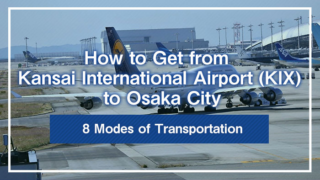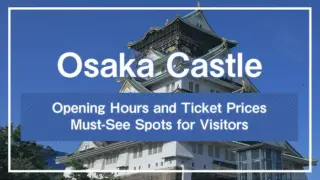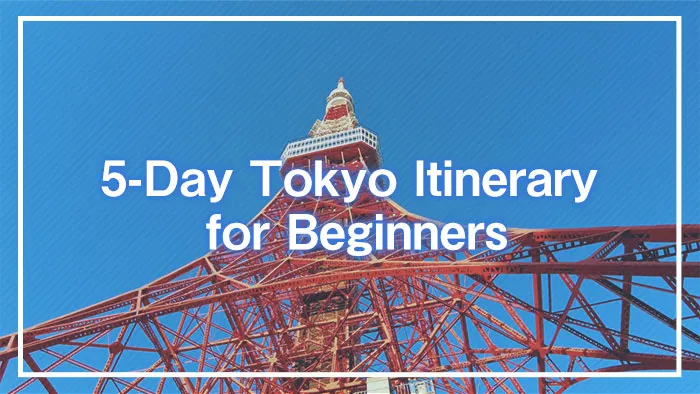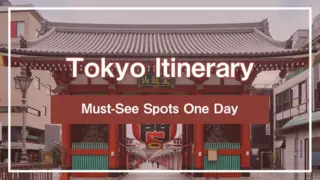For foreigners visiting Japan, Tokyo is a particularly popular destination. As Japan’s largest city, Tokyo offers a variety of areas where you can enjoy everything from modern cityscapes to beautiful nature.
To visit as many of Tokyo’s countless attractions as possible, it is important to plan your itinerary in advance.
This time, we will introduce a “5-day Tokyo itinerary for efficiently enjoying the city” aimed at foreign visitors who are not familiar with Tokyo. If you want to make the most of your time and enjoy your trip to Tokyo, please refer to this guide.
1.Tips for Beginners Traveling to Tokyo
For foreign visitors to enjoy their trip to Tokyo, it is important to keep the following two points in mind:
● Carry Cash
Although credit card and mobile payment options are becoming more common in Tokyo, there are still small restaurants, souvenir shops, and traditional inns or hotels that only accept cash. To ensure smooth transactions, always have some cash on hand.
● Avoid Rush Hour
Tokyo is the most populous area in Japan. Especially during the morning commute from 7:00 AM to 10:00 AM and the evening commute from 5:00 PM to 7:00 PM, known as “rush hour,” public transportation is extremely crowded. To avoid the exhaustion of packed trains, try to avoid traveling during these times.
2.5-Day Tokyo Itinerary
Tokyo is filled with countless attractions. To enjoy Tokyo within a limited 5-day period, it is crucial to plan an itinerary that allows for efficient travel between tourist spots.
Here, we will detail a specific plan for each day from the 1st to the 5th day of your Tokyo trip.
2-1.Day 1: Shinjuku, Meiji Shrine, Harajuku, Shibuya
On the first day of your Tokyo trip, visit Shinjuku, Meiji Shrine, Harajuku, and Shibuya. These areas offer shopping, dining, and a taste of traditional Japanese culture.
● Shinjuku
One of Tokyo’s major city areas. It is bustling with shopping malls and entertainment facilities. At night, the nightlife district “Kabukicho” comes alive. In the expansive “Shinjuku Gyoen” garden, you can enjoy cherry blossoms in spring and maple leaves in autumn, experiencing beautiful nature throughout the seasons.
● Meiji Shrine
Located within walking distance from Harajuku Station, Meiji Shrine is a shrine dedicated to Emperor Meiji and Empress Shoken, founded in 1920. Surrounded by a forest, the vast grounds provide a serene escape from the city noise. The seasonal beauty of nature attracts both domestic and international visitors.
● Harajuku
Known as the center of youth culture and fashion, Harajuku is lined with unique apparel shops, boutiques, and cafes embodying the “kawaii” culture. Simply walking through the area and observing the fashion of the young people is an enjoyable experience.
● Shibuya
Shibuya features several complex facilities connected to the station, offering a wide range of shopping, dining, and entertainment options. Famous landmarks include the globally recognized “Shibuya Scramble Crossing” and the “Hachiko Statue.” After shopping, taking a photo with Hachiko is a popular activity.
These four tourist spots are all connected by the JR Yamanote Line.To move efficiently, it is recommended to follow the route “Shinjuku → Meiji Shrine → Harajuku → Shibuya” or the reverse.
2-2.Day 2: Asakusa, Tokyo Skytree
On the second day of your Tokyo trip, explore Asakusa and Tokyo Skytree. Stroll around Asakusa in the morning or afternoon and enjoy the night view from Tokyo Skytree in the evening.
● Asakusa
Around Asakusa Station, the most famous attraction is “Senso-ji,” Tokyo’s oldest temple. Pass through the large lantern-adorned “Kaminarimon” gate to enter the temple grounds, where you can see the five-story pagoda and the main hall of Senso-ji. The Nakamise shopping street leading to the main hall is lined with stalls and souvenir shops offering local snacks.
Senso-ji is open 24/7 with free admission. To explore at your own pace, visiting early in the morning is recommended.
● Tokyo Skytree
As a broadcasting tower, Tokyo Skytree is Japan’s tallest tower, standing at 634 meters, almost twice the height of Tokyo Tower.
At night, Tokyo Skytree is beautifully illuminated. The lighting themes change with the seasons and events, so capturing the unique lighting in photos is a great idea.
At the base of Tokyo Skytree is the “Tokyo Solamachi” commercial facility. In addition to shopping and dining, there is also an aquarium, making it an excellent spot for couples and families.
From the Kaminarimon gate of Senso-ji to Tokyo Skytree, it takes about 20 minutes on foot. While public transportation is an option, walking allows you to enjoy the unique Tokyo scenery along the way.
2-3.Day 3: Tsukiji Market, Ginza, Imperial Palace
On the third day of your Tokyo trip, enjoy various Japanese foods at Tsukiji Market (Tsukiji Outer Market), shop in Ginza, and visit the Imperial Palace to see a traditional beautiful Japanese garden.
● Tsukiji Market (Tsukiji Outer Market)
Located a short walk from Tsukiji Market Station or Tsukiji Station, the Tsukiji Outer Market continues to operate even after the main Tsukiji Market moved to Toyosu in 2018. The market offers fresh seafood and sushi.
● Ginza
After enjoying breakfast or lunch at Tsukiji Outer Market, head to Ginza, about a 15-minute walk away. Ginza is Tokyo’s premier luxury shopping district, home to internationally renowned high-end brand stores and boutiques. Besides shopping, you can enjoy theaters like Kabukiza, museums, and the unique mix of historic and modern architecture.
● Imperial Palace
Located about a 20-minute walk from Ginza, the Imperial Palace is the residence of the current Emperor of Japan. The vast grounds of the palace feature Japanese gardens, ponds, and historic structures that attract many tourists. The nature-rich surroundings are also popular as a jogging course, frequented by many Japanese people.
From Tsukiji Outer Market to Ginza and then to the Imperial Palace, it takes about 15 to 20 minutes on foot. Although the distances are moderate, you can enjoy significantly different scenery in each area. If you have the energy and time, walking between these spots is recommended.
2-4.Day 4: Akihabara, Ueno Park
On the fourth day of your Tokyo trip, enjoy electronics and subculture in Akihabara, then relax in the natural setting of Ueno Park to unwind from the travel fatigue.
● Akihabara
The area around Akihabara Station is known as the “Electric Town,” where many shops sell various electronic products. It is also famous as a hub for anime, manga, and gaming culture, and you might even see cosplayers dressed as popular characters.
● Ueno Park
About a 20-minute walk from Akihabara, Ueno Park is a vast green space. The park features Japan’s oldest zoo, museums, art galleries, and historic buildings, making it perfect for families. You can relax and take in the scenery around the pond.
By the fourth day, travel fatigue may start to accumulate. It’s recommended to take it easy and prepare for the final day.
2-5.Day 5: Odaiba, Tokyo Tower, Roppongi
On the fifth and final day of your Tokyo trip, enjoy your time in Odaiba, Tokyo Tower, and Roppongi, which are relatively close to Haneda Airport.
● Odaiba
Odaiba is an artificial island in Tokyo Bay, known for its modern and beautiful cityscape with the sea in the background. It features large shopping malls and amusement facilities, offering plenty to do for a whole day.
● Tokyo Tower
Located about 20 minutes by car or 40-60 minutes by train from Odaiba, Tokyo Tower stands 333 meters tall. Completed in 1958, it has long been a symbol of Tokyo. Like Tokyo Skytree, it is beautifully illuminated at night, enhancing Tokyo’s nightscape. There are commercial facilities at the base, where you can enjoy shopping and dining.
● Roppongi
About a 5-6 minute drive from Tokyo Tower, Roppongi is known for its nightlife, with many bars open late into the night. It is also an international area popular among foreigners. The Roppongi Hills complex features an observation deck offering panoramic views of Tokyo.
If you are returning to Haneda Airport on the evening of the 5th day, it is recommended to visit in the order “Roppongi → Tokyo Tower → Odaiba.” However, if you are returning the next morning and want to enjoy the nightlife, the route “Odaiba → Tokyo Tower → Roppongi” is recommended.
Conclusion
Tokyo offers countless tourist attractions where you can enjoy the scenery, food, and experiences. As Japan’s largest city, Tokyo has excellent transportation options, but even locals can’t visit all the attractions in a few days.
To make the most of your 5-day Tokyo trip, use this model plan as a reference and consider creating an itinerary that suits your preferences.
*This article is based on information available as of July 2024.



